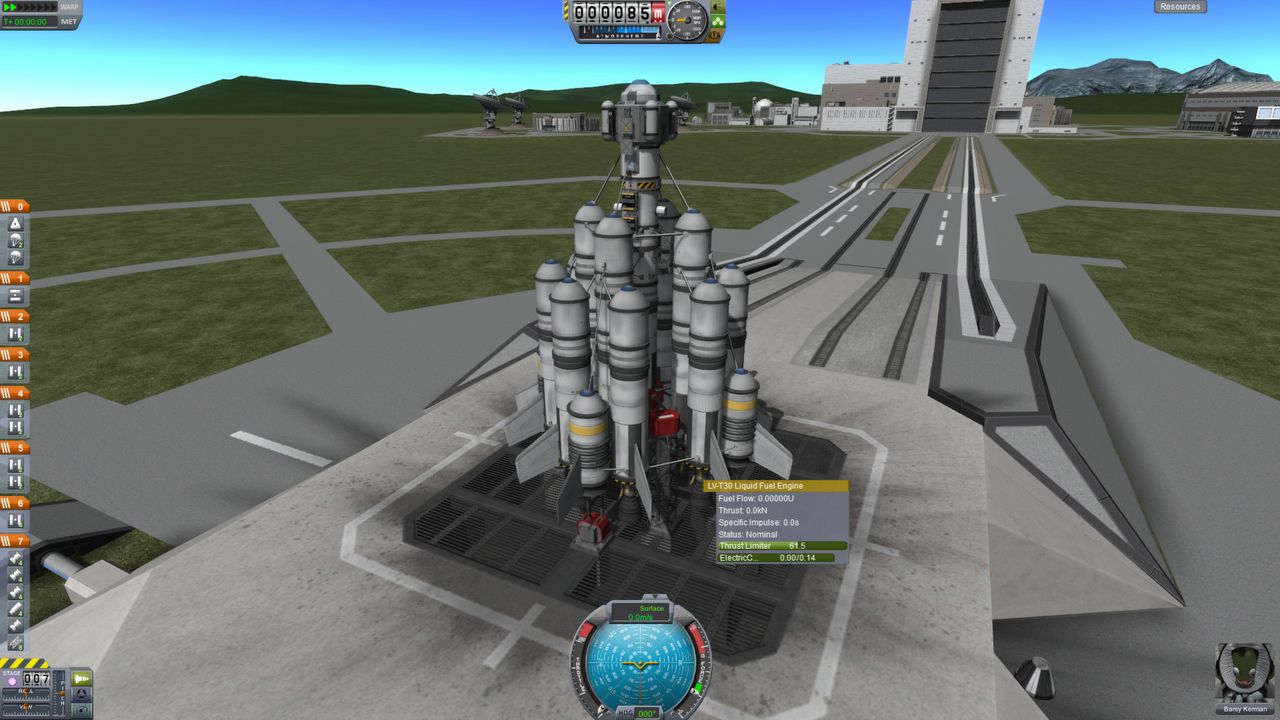

You try to stack multiple stages with nuke engines and the next thing you know you have yourself a wobbly skyscraper.So besides the hardware issues how exactly is the person who made this chart conducting his burns? Do you burn straight out of LKO to intercept? Because even with the right phase I have too much trouble tweaking my nodes for an intercept. I use them for my return stages, but the problem I find with nukes is there too large. No matter how much fuel I put into space its always the same result. And.it fails everytime.Įvery ship I construct for a landing and return ends up using every last drop in just getting to the target planets surface. Then at the the right phase angle ( -151 degrees for Moho I believe ) I make the transfer burn. Then at Mohos ( or any other planets ) AN/DN I perform the inclination burn. From 80km LKO I burn prograde just until SoI change to get the most circular Kerbol orbit as I can. So that leads me to believe I'm doing it wrong. Over 1k ) Then the burn to Moho took me several thousand m/s of d-v. How is it only 730m/s from escape from to Moho intercept? It took me that much just to match inclination ( more I think. I have contributed values to it and recommended that the author add 10% to all true values to account for error. Of course, has to be aerodynamic too to launch off Kerbin. If you can fly (TWR > 1) and delta-v is at least the required to do something (launch off Kerbin is 3400 on the image), then you're pretty much golden. This is the best delta-V map available right now. TWR needs to be above 1 to get off the ground (launch or land), and delta-v needs to be enough no matter what TWR is.

Kerbal space program dv map how to#
This of course assumes you know how to dock well.Ī parachute is used to return the command pod to Kerbin, so no fuel is needed to land on Kerbin. This way you don't need to land your return fuel on Moho. It's possible to do this, but it may be easier on your equipment load and fuel requirements if you build a vessel that carries a lander to Moho, detaches the lander, the lander lands, launches, re-docks, transfers crew and any remaining fuel, and then jettisons the lander. So, for a single craft launching from Kerbin, landing on Moho, and Launching from Moho to return to Kerbin, the total would be: * These above two values should be combined as one for purposes of going there, so, 2930 m/s, because the dv to get from Kerbin escape to Moho intercept may vary depending on intercept altitude, but it is nominally 730 dv.ġ400 is the value to get from Moho surface to 50K LMO. How to calculate amount of dV needed to get back to Kerbin based on that map?Ģ200 - from Moho intercept to 50K LMO circulization Is that last number between "Low Orbit" and celestial body dV needed to deorbit and land or to get back to orbit. Gravity diminishes with the square of the distance as you move away from the focal point of Kerbin. 2200 - This one is slow down and "close" orbit around Moho at 50km?ġ400 - Is deorbiting or getting back from ground to orbit?ġ. The principle rules for getting an article into space from Kerbin and keeping it there (which is called accomplishing a steady circle) are genuinely simple to clarify: Your specialty should conquer gravity and drag.


 0 kommentar(er)
0 kommentar(er)
